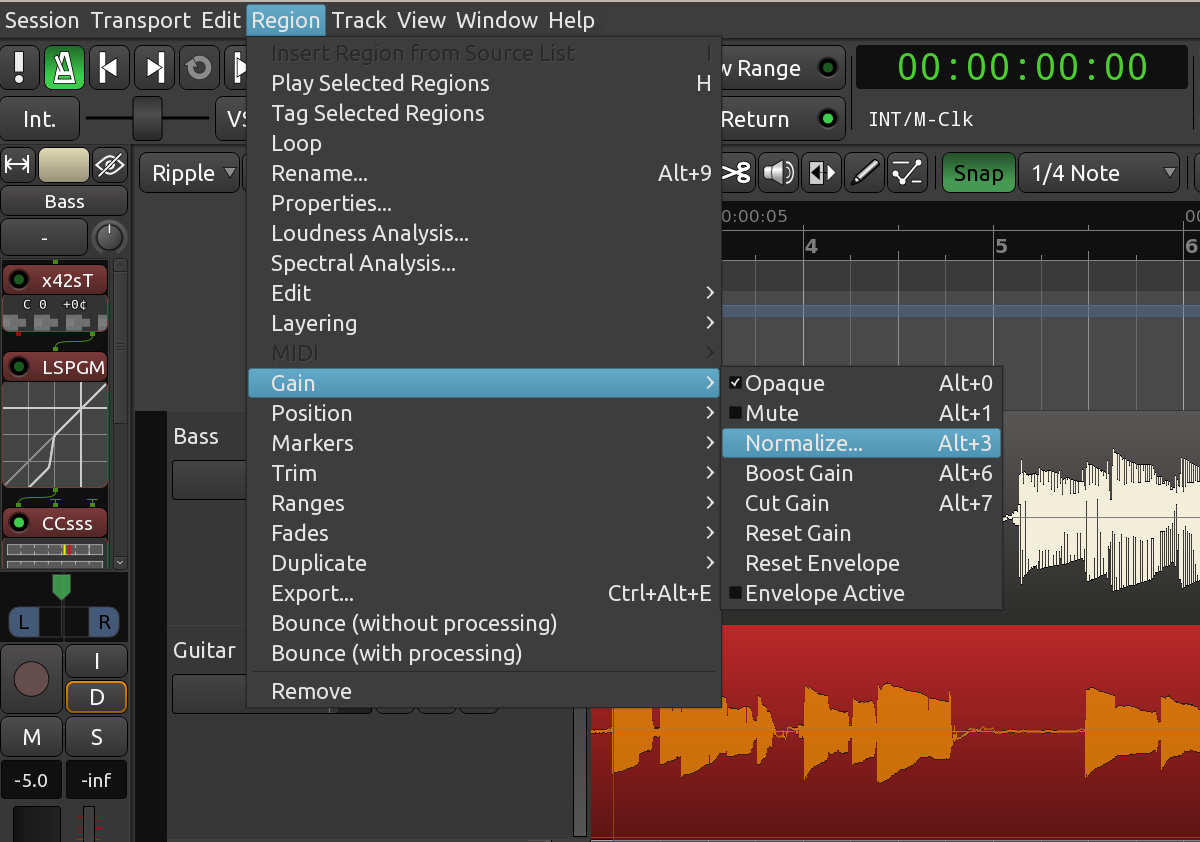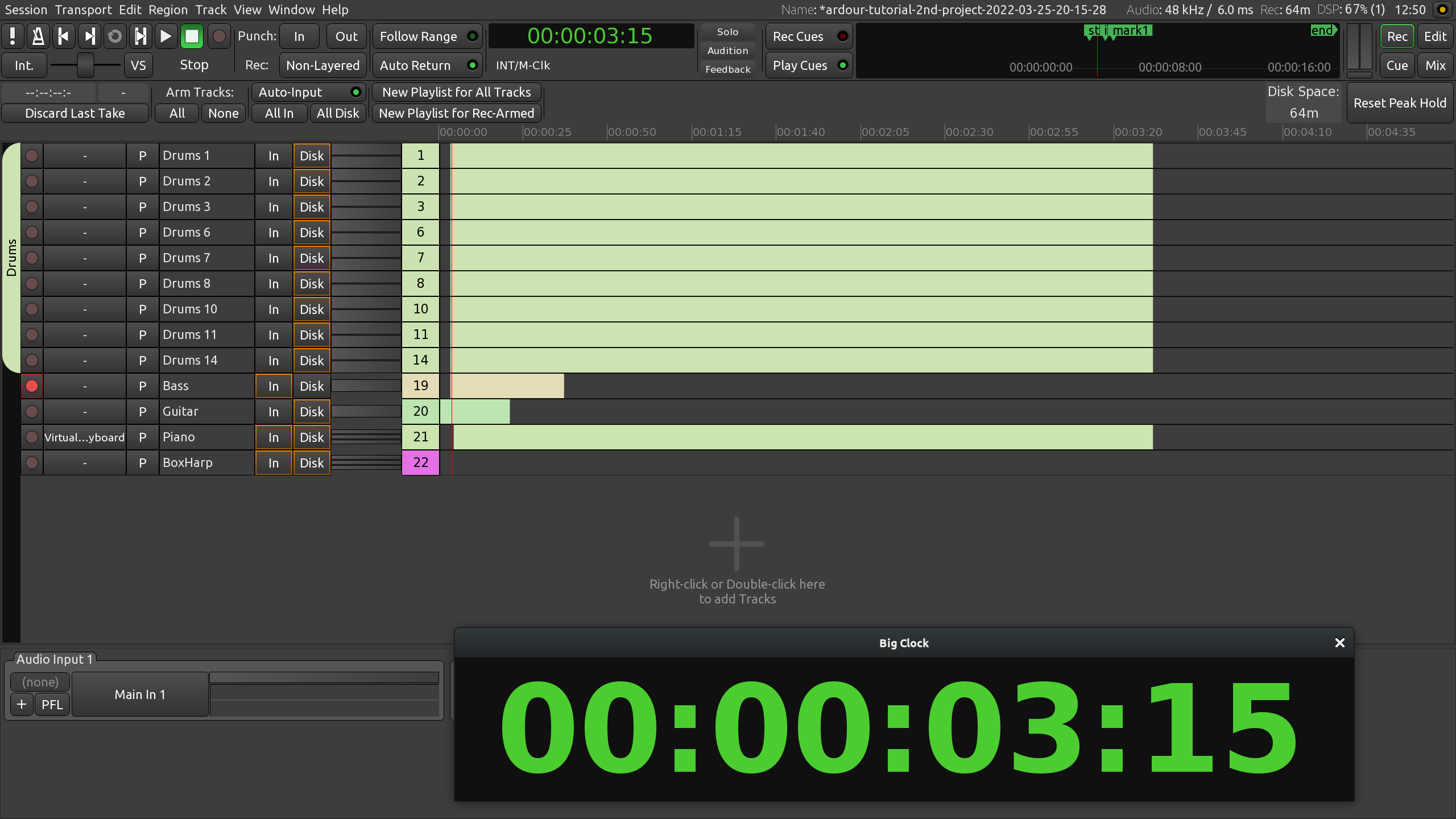4.9 KiB
+++ title = "Overview of the Interface" description = "Basics of Ardour's user interface" weight = 2 +++
This section will give you a basic overview of Ardour's user interface.
We will take a look at shared elements of the interface, main windows, and focus on the Editor window and the Mixer window. Later chapters will give more detailed information on each feature listed here.
Ardour's window
Here is a typical view of a project opened in Ardour:
There are two larger parts of the user interface:
-
Static part that contains program's menu, transport panel, clocks, navigation timeline, and various controls. We'll talk about it later on this page.
-
Dynamic part that changes depending on the currently opened window. We'll talk about that on further pages covering every window (Editor, Mixer, Recorder, Cue).
Let's get on with the static part and focus on features that will be of immediate use to you.
Program's menu
This is a fairly straightforward way of accessing features in any program, you shouldn't have any problems navigating it. Session-specific commands are in the Session menu, everything that is related to playing and recording is in the Transport menu, most editing features are in Edit and so on.
For convenience, item-specific features are duplicated in the right-click menu. For instance, you'll find the contents of the Region menu in the right-click menu for a selected region (a clip that you can see on the timeline, see further pages of the tutorial).
Info Panel
This panel displays useful information about the currently opened project (sampling rate, latency, DSP load) as well as how many estimated minutes of recording are available given the current amount of free disk space.
If you right-click on it, you will see more options such as name of the current project snapshot (more on that later) and wall clock (as seen on the screenshot above).
Transport panel
The transport panel allows easily navigating the project: going to session start/end, playing entire session or just a selection (called 'range' in Ardour), initiating recording.
The bottom of the panel has jog/shuttle controls for skipping backward and forward at various speed while playing back the contents of the session.
In case you want the transport panel sans jog-shuttle controls somewhere else on
the screen, you can open a floating window called Transport Controls
(Window > Transport Controls). You can move this window anywhere on the
screen and resize it.
Clocks
The main clocks are located next to the transport controls. Clocks in Ardour can display time in 4 different formats: Time Code, Bars:Beats, Minutes:Seconds, and Samples. Right-click on the clock to select a format. You can also turn the clock off. The reason for having two transport clocks is that it allows you to see the playhead position in two different time units without having to change any settings.
If you are working in a home studio where you use a footswitch to toggle
recording and you are a few meters away from the screen, you might want a bigger
clock. Use Window > Big Clock to open a clock window that will float on top of
all other windows and resize it to your liking.
Please see the Setting Up the Timeline chapter for more details on the clocks.
Navigation timeline
To the right of these two clocks you can see the mini-timeline, also called Navigation Timeline. It's a convenient way to be reminded of cues and location markers, especially when you are in the Recorder window where the timeline doesn't have those rulers.
Please check the Ardour manual for more information on the mini-timeline.
Switching Between Windows
To the right of the global toolbar, right after the Navigation Timeline and the master bus output meter, you'll find a convenient widget to switch between major Ardour windows — Editor, Mixer, Recorder, and Cue.
Alternatively, you can use Ctrl+PageUp/PageDown to cycle through windows, much like in any web browser.
You can also use the Alt+M shortcut to switch between Editor and Mixer windows. If you are currently in either Recorder or Cue window, pressing that shortcut for the first time will take you to the Mixer window, and the another one will take you to the Editor window.
Continuing
The next sections will explain basics of main Ardour's windows:







